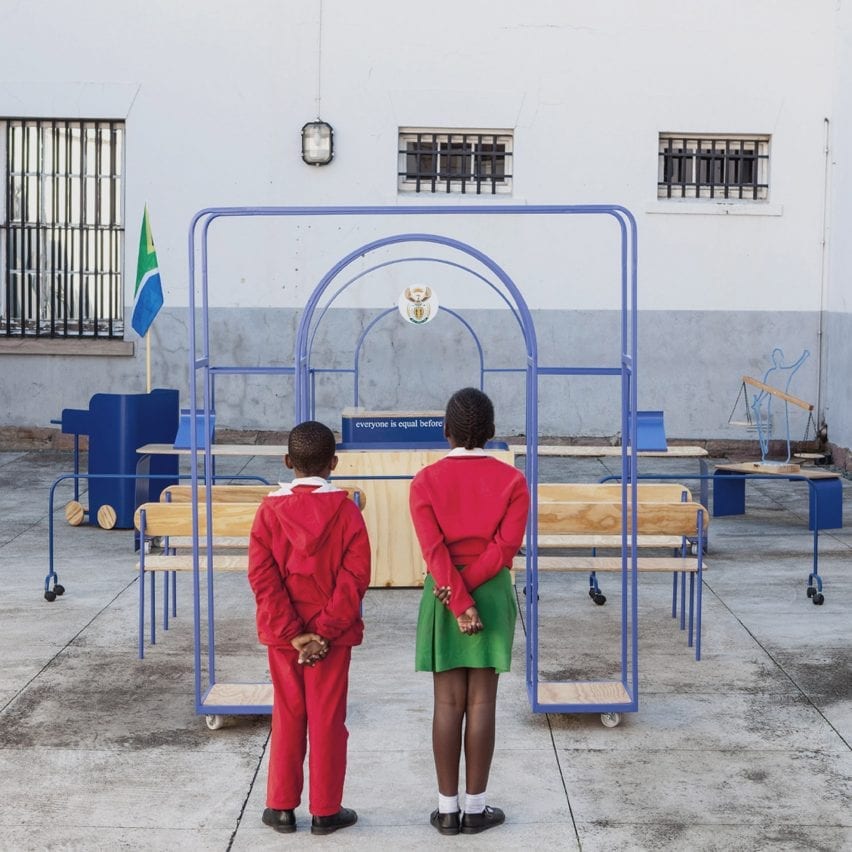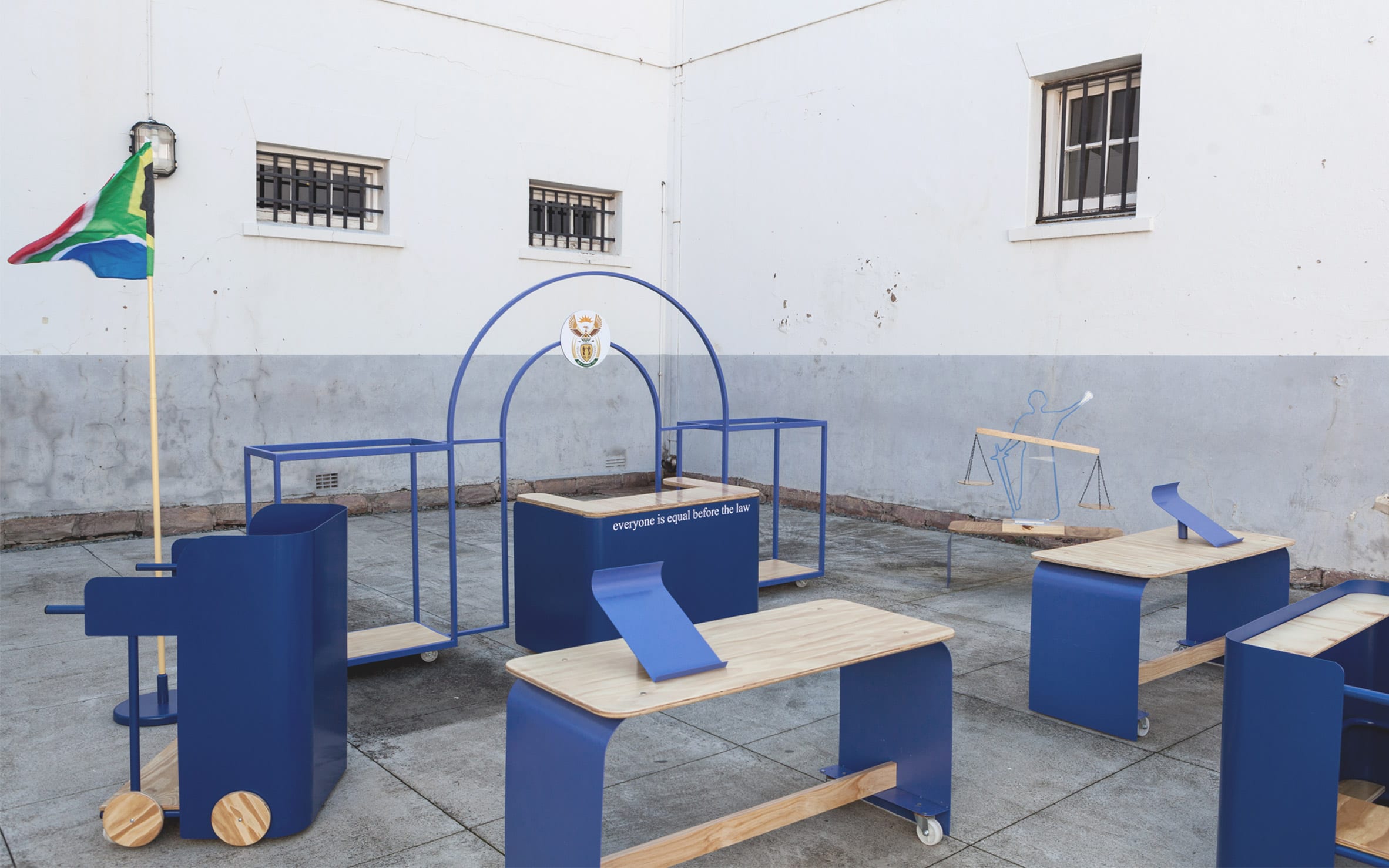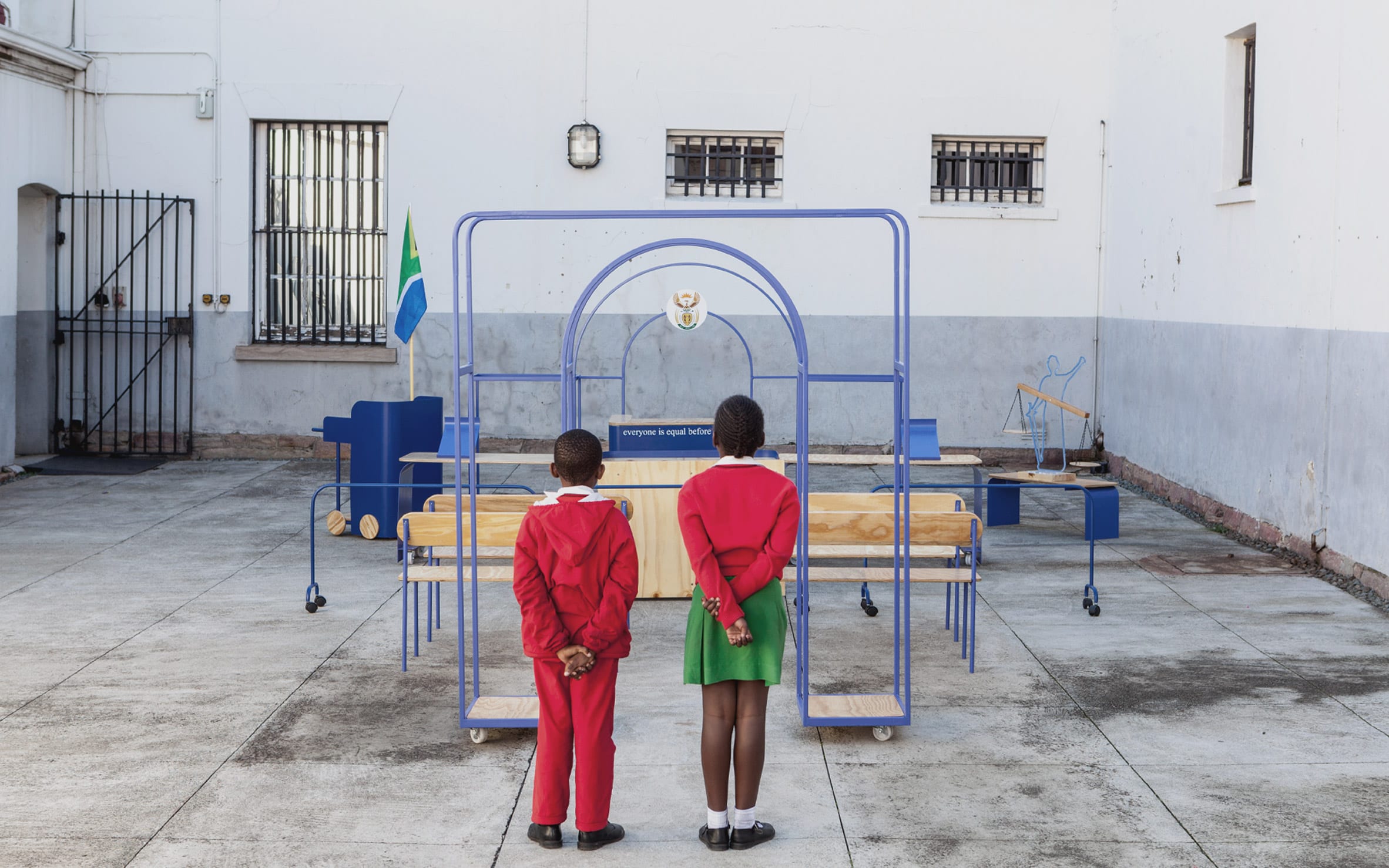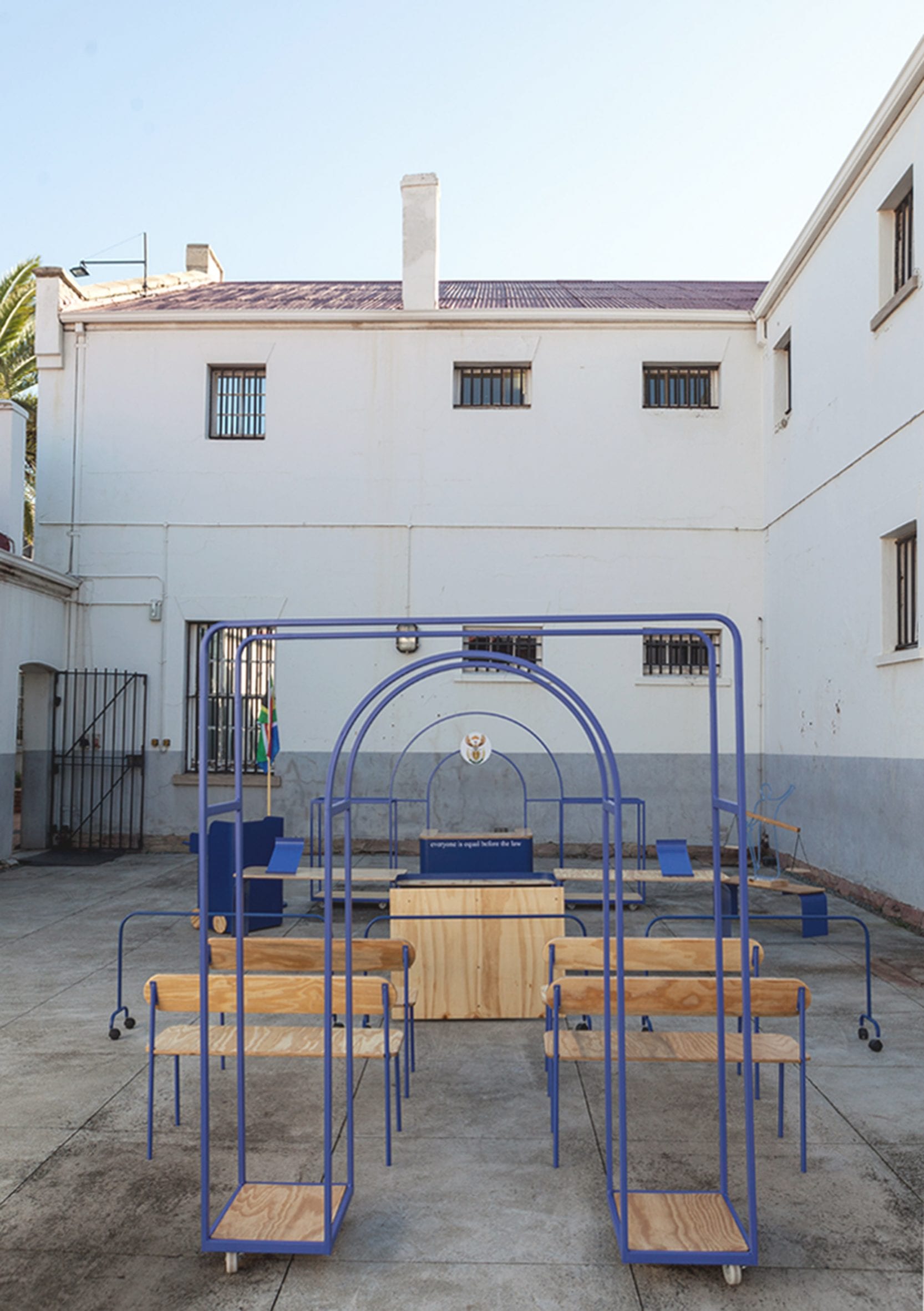
In the third of our series of exclusive video interviews with Sumayya Vally, the architect discusses how her studio Counterspace‘s Children’s Courtroom project aimed to teach kids about the law, rights and equality.
The installation comprises a set of kids-sized furniture elements imitating furniture found in standard courtrooms.
It is used as an educational tool for children to learn about concepts related to the law, court procedures as well as their own rights and equality.

“The project is designed as a stage set for teaching children about how the justice system works and preparing child witnesses for court,” Vally explained in the video.
Made from wood and blue metal elements, the installation includes a witness stand, a defendant’s stand, a judges table, seating for the accused, seating for the public and a courtroom entry arch.
It was created for the children’s museum Play Africa at Constitutional Hill in Johannesburg, the biggest constitutional court in South Africa. However, it can easily be packed up so that it can be transported to other locations.

“This piece had to be designed to be able to function at Constitutional Court, but also to be packed up onto a van and then unrolled on a parking lot in a very rural area or in a street in inner-city Johannesburg,” the architect said.
“It’s really important that the pieces are able to come together to function as a court for children but also that they can function in separate parts for different functions.”
Counterspace has worked with Play Africa on a number of projects including an interactive exhibition on indigenous Ndebele art which teaches children about the mathematical concepts around geometry, pattern, depth perception and scale.
Vally is the architect behind this year’s Serpentine Pavillion. She founded her Johannesburg-based architecture studio Counterspace at the age of 23 and is the youngest architect to receive the prestigious commission.

Dezeen is publishing a series of exclusive video interviews with the architect. In the previous instalment, Vally discussed the studio’s project Folded Skies, a mirrored installation exploring the complex geographies of Johannesburg.
Below is a transcript of the interview:
“Children’s Courtroom is an installation that was made at Constitutional Hill, which holds the highest court of the land in South Africa and is also home to Play Africa, which is an organization that works with children from across Johannesburg.
“The project was done for Play Africa, and we often work with them on very quick, very inexpensive prototype projects.
“The project is designed as a stage set for teaching children about how the justice system works and preparing child witnesses for court.
“So this piece had to be designed to be able to function at Constitutional Court, but also to be packed up onto a van and then unrolled on a parking lot in a very rural area or in a street in inner-city Johannesburg.
“And it’s really important that the pieces are able to come together to function as a court for children but also that they can function in separate parts for different functions.”
The post Counterspace's Children's Courtroom installation "teaches children about the justice system" appeared first on Dezeen.
